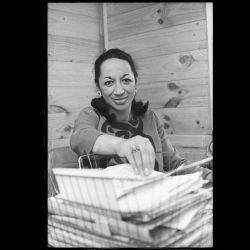International Women's Day
8th of March, International Women's Day
5/8/23, 9:28 AM
Today is International Women’s Day. Time to celebrate our mana wāhine!
This is a day to honour the courage and determination of all the women who have changed history, and to encourage those who continue to do so. What would become International Women’s Day began back in February 1909 when 15,000 female labour activists marched in New York City for equal rights. Like our own Kate Sheppard and her calls for voting equality, their voices were heard, and eventually the first International Women’s Day was honoured in March 1911.
We are extremely fortunate in Aotearoa to have many mana wāhine we can admire. From politicians to singers, sports stars to authors, we can celebrate what women can do for ourselves, our wives, daughters and friends, and for us as a nation.
You may like to learn more about these two mana wāhine, one an important figure in the history of our wānanga, and one an important figure in the history of our country.
Marie Panapa (Aunty Ma)
The very fact she was known as Aunty Ma signals how important she is to our story. She was involved right from the early days, when the budding Waipā Kōkiri Arts Centre was growing towards the national education provider Te Wānanga o Aotearoa is today.
Back in the day when there were no marketing resources, recruitment staff or pool cars, Aunty Ma would take a creative approach to spread the word about a fledgling Te Wānanga o Aotearoa. “These were times when we had no cars, no money and you were always trying to work out what’s the best way to draw people’s attention to what you were doing,” she says.
“I tried to maximise things I was good at so I would put a banding wheel on the footpath and like any artist I would have a platter that hadn’t been designed, one that was in the process and one that had been through the kiln and finished.”
“People could see the process, the platter would come through like this and it would become something beautiful like this and they would stand for ages and wonder where all of this took place and It was through that engagement that I was able to maximise the kōrero for our sites.”
Taking something in its roughest form and helping to re-shape it into something beautiful, is something Aunty Ma was a part of for many years. She passed on in 2017, but as all matriarchs, her legacy will always live on.
Watch the video where she talks about her experience when being interviewed for a role.
Whetū Tirikātene-Sullivan
As the first Māori woman cabinet minister Whetū had a lot of pressure resting on her shoulders. She not only advocated for Māori rights and education, she fought to prove women could be both a politician and a mother.
Her schooling was largely pakeha, where she was often the only Māori child, but this only encouraged her to exceed at school, sport and dance. Her father, Eruera Tirikātene, held the Southern Māori parliament seat until 1967, and this exposure contributed to her own political. Whetū worked as a social worker, completed a university degree and was awarded a scholarship to complete her PhD in political science before the death of her father provided the opportunity for her political career to begin. She went on to become the second longest serving woman MP, the first cabinet minister in the Commonwealth to give birth and a member of the Order of New Zealand (highest honour in Aotearoa). During her career, she was an advocate for Māori rights and education, paved the way for gender equality in parliament and other industries, and was one of the first to initiate private bills seeking official status for te reo Māori.
With dignity and flair, she spoke about Māori and women’s rights, and lobbied for the teaching of Māori language, culture and history in Aotearoa. Whetū used her position as a prominent figure in Aotearoa to showcase Māori art in the outfits she wore. In a time where the norm was a conservative suit, she commissioned pieces from contemporary Māori artists, and in doing so reminded audiences of her identity and where her solidarity lay. She died in 2011, but she lives on as a key member on the path of gender equality in Aotearoa.
